1. Predictive Maintenance
AI-driven predictive maintenance shifts aircraft upkeep from a reactive to a proactive approach. Machine learning models analyze sensor data, flight logs, and maintenance records to forecast when components are likely to fail. This allows maintenance teams to service or replace parts just before a failure would occur, thus preventing unexpected breakdowns. By addressing issues in advance, airlines reduce costly unscheduled repairs and avoid flight delays or cancellations. Overall, AI enhances fleet reliability and safety by ensuring maintenance is performed at the optimal time rather than on a fixed schedule or after a failure.
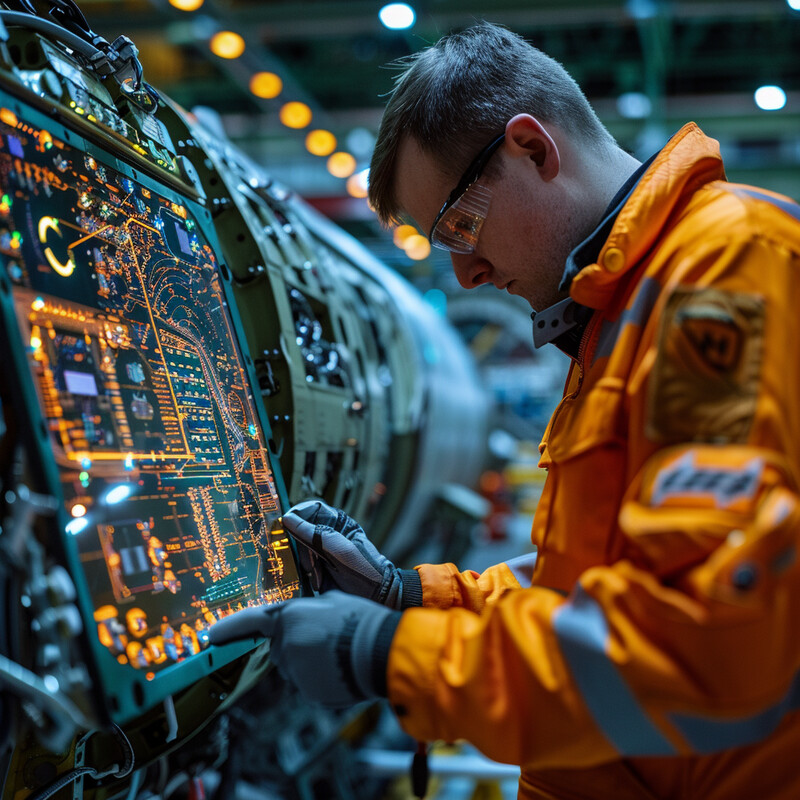
In the U.S. Air Force, an AI-enabled predictive maintenance program has demonstrated significant benefits. For example, applying AI analytics to B-1 bomber maintenance completely eliminated unscheduled repair breaks and cut associated unscheduled maintenance labor by 51%. These improvements were achieved by the Air Force’s “Condition Based Maintenance Plus” initiative using AI to analyze vast amounts of sensor and historical data. By predicting failures and scheduling repairs before issues become critical, the Air Force not only increased aircraft availability but also saved substantial maintenance time and costs.
2. Fault Diagnosis
AI plays a crucial role in fault diagnosis by rapidly identifying and locating problems in aircraft systems. Advanced algorithms process data from engine sensors, avionics, and even images to detect anomalies that indicate faults. AI can recognize patterns and failure signatures far faster than manual methods, helping engineers pinpoint root causes of issues. This accelerates troubleshooting and ensures that maintenance crews address the correct problem on the first attempt. By improving the speed and accuracy of fault diagnosis, AI minimizes aircraft downtime and enhances safety through prompt repairs.

The aviation industry has begun using AI-powered inspection tools to dramatically speed up fault detection in complex components like jet engines. Rolls-Royce, for instance, developed an automated AI inspection system that reduces engine inspection time by 75% and is projected to save on the order of hundreds of millions in costs over five years. The system uses computer vision and machine learning to examine engine borescope images and detect wear or damage that would be hard for the human eye to catch quickly. By flagging issues such as small cracks or component fatigue early and efficiently, this AI diagnostic approach not only slashes inspection time but also prevents minor faults from escalating into serious failures.
3. Parts Inventory Management
AI enhances parts inventory management by accurately forecasting the demand for spare parts and optimizing stock levels. Airlines gather massive amounts of data on component usage rates, failure trends, and replacement cycles, which AI algorithms analyze to predict when and which parts will be needed. This predictive insight allows maintenance departments to stock the right parts at the right time, avoiding both shortages and excess inventory. With AI, procurement can be scheduled well in advance of need, reducing last-minute emergency orders. In sum, AI-driven inventory management ensures critical components are available for maintenance without tying up capital in unneeded spares, thus improving cost efficiency and aircraft readiness.
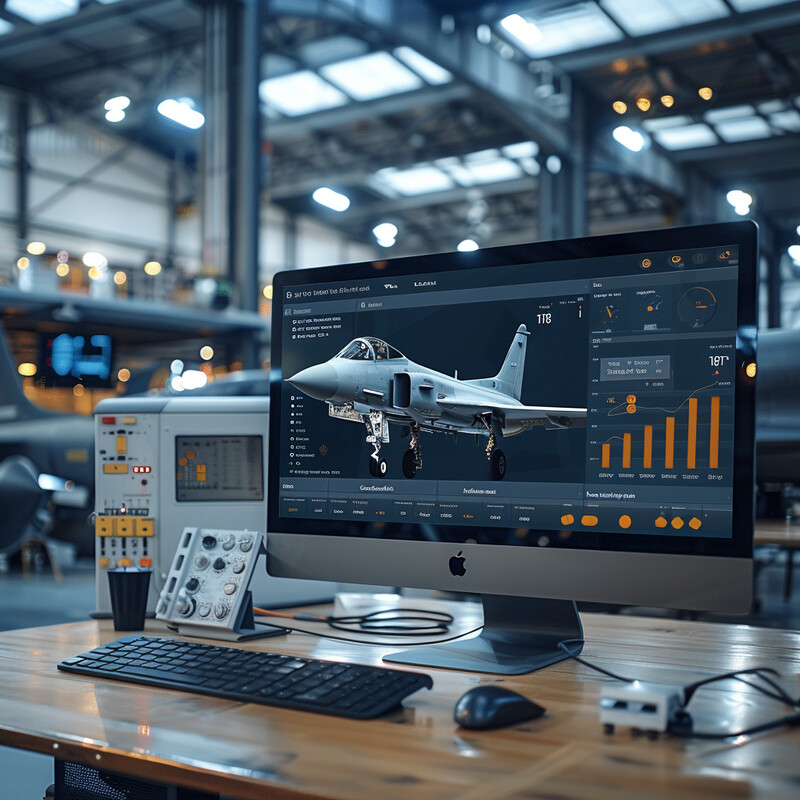
Delta Air Lines’ TechOps division has deployed AI to transform its spare parts planning through a program called APEX. As a result, Delta increased its predictive parts demand accuracy to over 90%, more than double the previous accuracy, and extended its maintenance planning horizon to 18 months. This means Delta’s system, powered by real-time engine health data and machine learning, can alert suppliers of needed components well over a year in advance. In practice, such AI foresight lets Delta work closely with parts vendors to ensure availability and prioritize manufacturing of parts it will require, preventing delays due to parts shortages. The improved forecasting has also led to multi-million-dollar cost savings by minimizing surplus inventory and avoiding urgent procurement.
4. Maintenance Scheduling
AI optimizes maintenance scheduling by finding the best times to perform repairs or inspections with minimal impact on operations. Traditional scheduling often relies on fixed intervals or reactive planning after a problem occurs, which can lead to aircraft being taken out of service at inopportune times. AI tools, however, continuously analyze flight schedules, aircraft health data, and crew availability to forecast maintenance needs and slot them in efficiently. By integrating all these factors, AI can suggest maintenance windows that align with periods of low aircraft utilization or combine tasks to reduce repeated downtime. This smart scheduling ensures maintenance is done promptly but with the least disruption, thereby increasing fleet utilization and on-time performance.
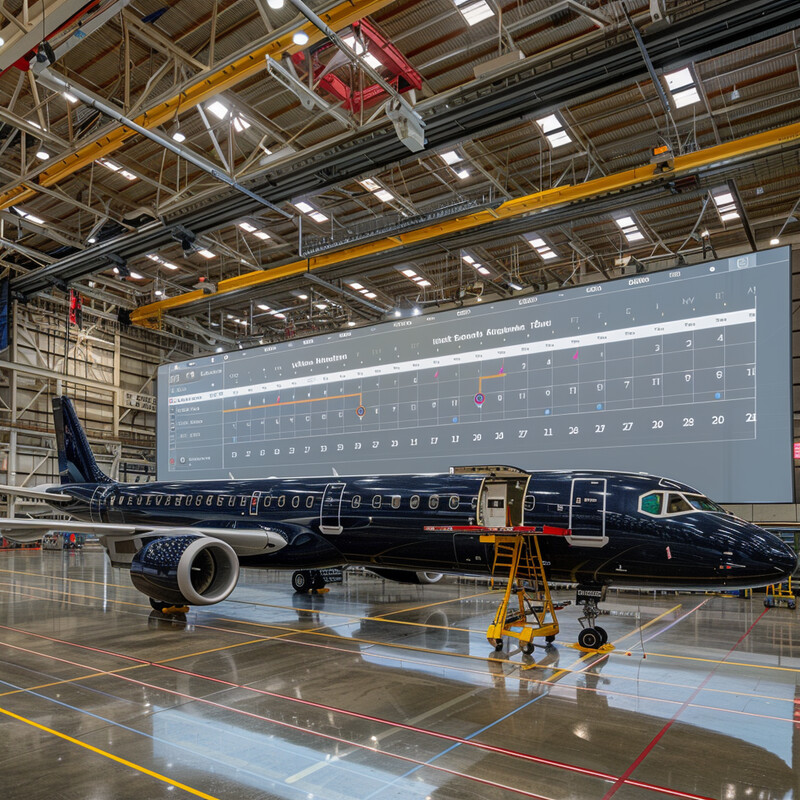
Major airlines are using AI to intelligently schedule maintenance and reduce the time aircraft spend grounded. United Airlines, for example, employs AI-based predictive models to anticipate when parts are likely to fail, allowing it to schedule maintenance proactively and cut down on unexpected downtime. With AI forecasting potential component issues, United can plan repairs during scheduled stops instead of reacting to in-service failures. This approach has led to more effective timing of maintenance events and fewer flight delays caused by last-minute fixes. In practice, such AI-driven scheduling has improved United’s operational reliability by ensuring that aircraft are serviced before problems disrupt the flight schedule, thus keeping more of their fleet available for service.
5. Fuel Efficiency Monitoring
AI contributes to fuel efficiency in aviation by analyzing vast flight data to identify ways to conserve fuel. Airlines use AI to monitor engine performance, flight routes, altitude profiles, and even weather patterns. By sifting through this data, AI systems can recommend optimized flight plans (such as more direct routes or efficient cruising altitudes) and ideal engine operation settings to pilots and dispatchers. AI also helps in detecting when an aircraft’s fuel burn is deviating from the norm (perhaps due to engine degradation or suboptimal procedures) so that maintenance or operational changes can be made. Through continuous monitoring and smart adjustments, AI-driven insights help airlines reduce fuel consumption, save costs, and lower emissions.
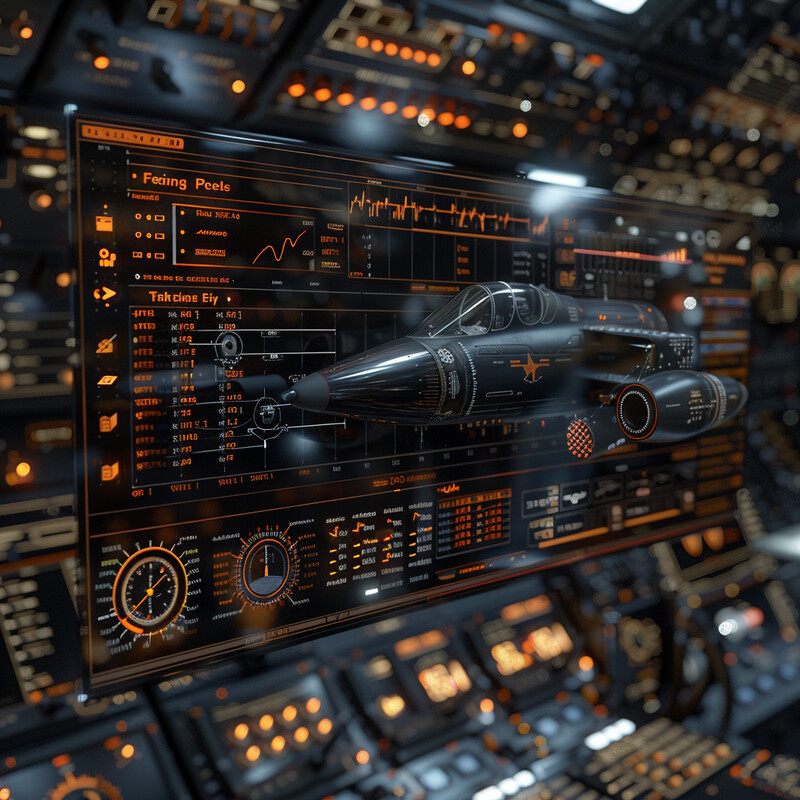
Airlines are seeing concrete fuel savings by deploying AI for route optimization and operations. Alaska Airlines, for instance, used an AI platform to optimize flight routes in 2023 and managed to cut its jet fuel usage by over 1.2 million gallons that year. This AI system, called Flyways, evaluates factors like weather, air traffic, and aircraft performance in real time to suggest more fuel-efficient routes that pilots can take. According to Alaska’s sustainability report, the adoption of AI-guided routing not only reduced fuel burn significantly but also helped the airline rank among the top U.S. carriers for on-time performance in 2023. Such results underscore how AI-driven fuel monitoring and optimization directly translate into economic savings and environmental benefits.
6. Structural Health Monitoring
AI improves structural health monitoring (SHM) by continuously analyzing data from sensors embedded in an aircraft’s structure (wings, fuselage, etc.) to detect early signs of stress or damage. Modern aircraft may be equipped with strain gauges, acoustic sensors, or fiber optics that feed data to AI systems in real time. The AI can identify patterns or anomalies—such as unusual vibration frequencies, crack propagation signals, or changes in material strain—that indicate fatigue or structural issues developing. By catching these subtle indicators, maintenance can be directed to inspect or reinforce specific areas long before a structural failure would occur. This AI-enhanced vigilance over structural integrity helps extend the lifespan of aircraft components and ensures safety by addressing material wear and tear proactively.
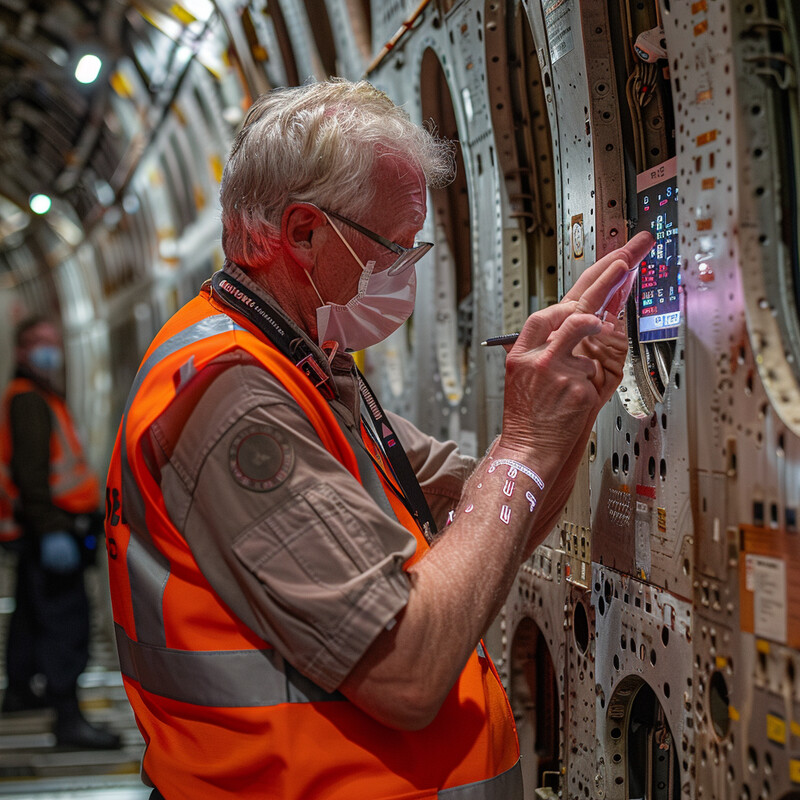
Airlines and manufacturers are deploying AI-based vision and sensor systems to keep a close watch on structural integrity. Advanced AI inspection platforms can now automatically identify defects like cracks, corrosion, or loose fasteners on aircraft surfaces far faster and more accurately than human inspectors. For example, AI-driven drone inspection systems can scan an airplane’s exterior for tiny signs of metal fatigue or skin damage that a manual visual check might miss. In one industry case, computer vision algorithms analyzing high-resolution images were able to flag hairline cracks on an airframe that engineers then repaired before the issue grew. By using AI for structural health monitoring, maintenance teams can perform targeted fixes and avoid the risk of structural failures, thereby improving long-term airframe durability and safety.
7. Compliance and Documentation
AI streamlines compliance and documentation in aircraft maintenance by automating record-keeping and ensuring that all required procedures are logged accurately. Maintenance on aircraft must adhere to strict regulations (from bodies like the FAA), and every action needs documentation for safety and auditing. AI-powered systems can digitize and organize maintenance logs, work orders, and inspection reports, making it easy to retrieve information during audits or inspections. They can also cross-check entries to ensure nothing is missing or overdue—such as a required inspection that hasn’t been performed within its interval. By automating reminders for scheduled tasks and verifying documentation completeness, AI reduces human error in paperwork and helps maintenance operations remain in full regulatory compliance.

Maintenance crews are beginning to use AI-driven software to handle the mountains of documents and rules involved in aviation upkeep. Industry reports highlight that an AI-based documentation management system can automatically track maintenance schedules and simplify compliance audits by making it easy to find and analyze maintenance records. For example, instead of manually sifting through binders or spreadsheets, technicians can query an AI system to pull up the complete history of a component’s repairs or an aircraft’s inspection status in seconds. Airlines have found that such systems not only prevent lapses (like a missed inspection) by sending timely alerts, but also speed up the process of proving compliance to regulators. This leads to fewer audit findings and a more efficient maintenance operation that reliably meets all safety requirements.
8. Augmented Reality for Maintenance Training
AI-powered augmented reality (AR) is revolutionizing maintenance training by overlaying digital information onto the real-world environment for technicians. Wearing AR glasses or using tablets, mechanics in training can see interactive 3D models, step-by-step checklists, or expert annotations superimposed on actual aircraft components as they work. AI is used to interpret what the trainee is looking at and provide guided instructions or warnings in real time. This immersive training method accelerates learning by allowing technicians to practice procedures virtually on any aircraft system, often with real-time feedback on their performance. AR training tools can also enable less experienced mechanics to carry out complex tasks with remote expert support, thereby shortening the learning curve and helping maintainers become proficient more quickly while avoiding mistakes.
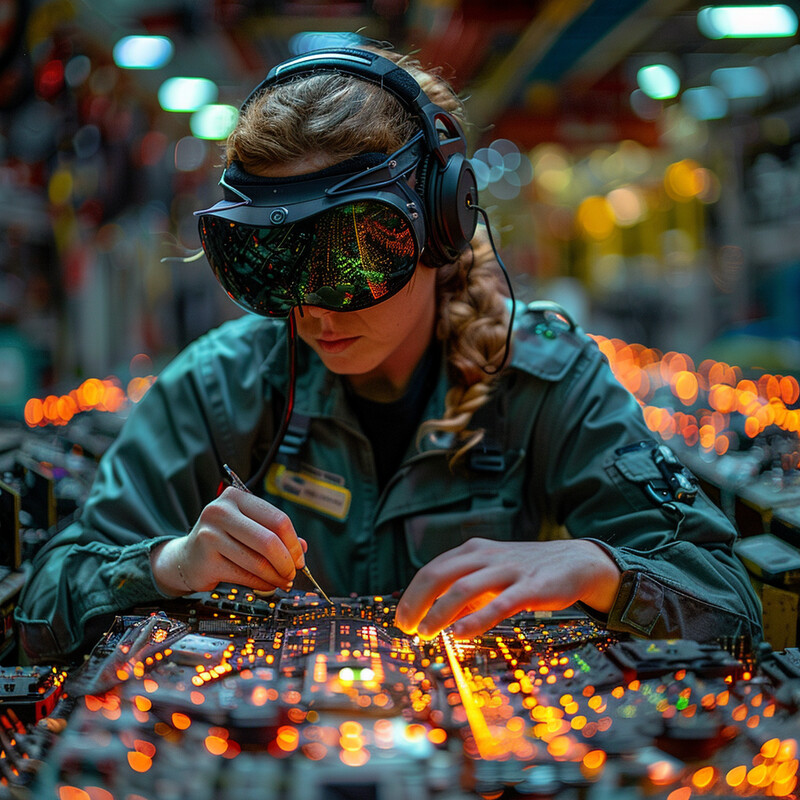
The U.S. Air Force has tested AR maintenance training and found substantial improvements in trainee performance. In one evaluation, Air Force technicians using an AI-driven AR work instruction platform made 53% fewer errors compared to those following traditional manuals. The AR system would project visual cues and step guides onto the equipment, ensuring each step was done correctly. Moreover, those using AR were far less likely to improperly install parts (the control group without AR had 57% more instances of incorrect part installation). Importantly, the study noted that completing tasks with AR took no significant additional time despite the guidance overlay. These results suggest that augmented reality not only helps technicians avoid mistakes but does so without slowing down the maintenance process, thus holding great promise for improving training outcomes and maintenance quality.
9. Life Cycle Management
AI assists in aircraft life cycle management by providing data-driven insights that inform decisions throughout an aircraft’s operational life. From initial deployment to mid-life upgrades and eventually retirement, AI can analyze trends in performance, maintenance costs, and failure rates to optimize each phase. For instance, AI can help determine the most cost-effective time to perform major overhauls or to retrofit new technology, balancing extended service life against costs. It can also predict when an aircraft or major component is approaching the end of its useful life, allowing operators to plan replacements or phase-outs in advance. By considering long-term patterns, economic factors, and safety data, AI ensures that each aircraft in a fleet is utilized to its fullest safe potential and that resources for maintenance and upgrades are invested at the right moments for maximum return.
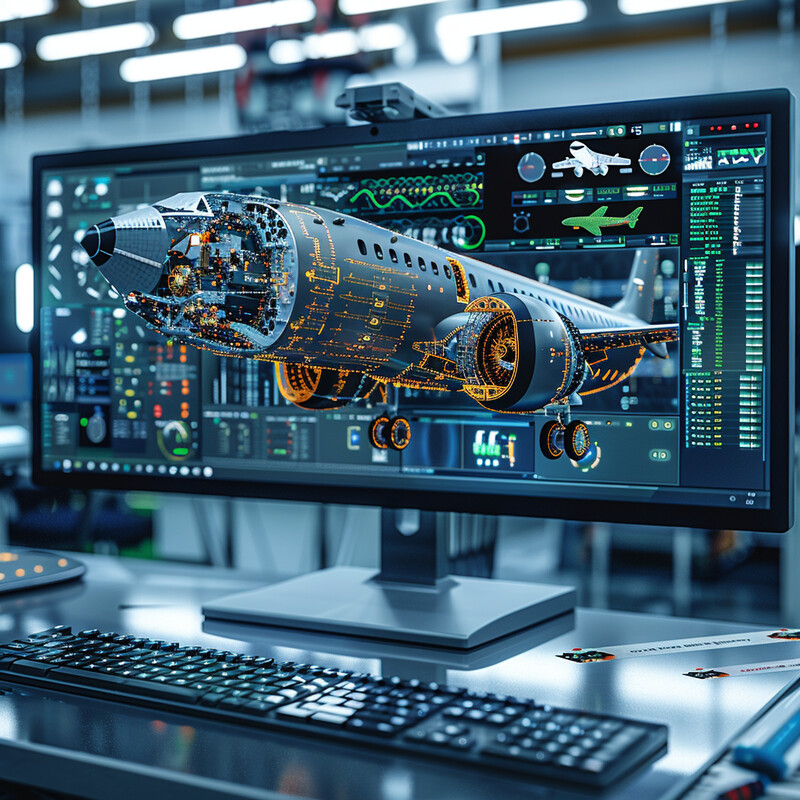
The benefits of AI in life cycle management are evident in reduced maintenance costs and extended asset availability. A Government Accountability Office review noted that the Air Force’s initial forays into AI-driven maintenance yielded notable savings—about $5 million over two years by reducing unscheduled maintenance on ten B-1B bombers. These savings came from avoiding reactive fixes and downtime through predictive strategies, effectively extending the period those bombers could operate without major disruption. In one case, the AI analysis pinpointed a chafed wiring issue deep in a B-1’s airframe that maintainers hadn’t been able to find manually, saving hundreds of hours of investigative labor and preventing a potential serious failure. Such examples show how AI-informed maintenance and overhaul planning can significantly lower life cycle costs and keep aircraft mission-ready longer.
10. Remote Monitoring and Assistance
AI enables remote monitoring and assistance in aircraft maintenance by allowing experts to oversee aircraft health and guide repairs from afar. Modern aircraft continuously transmit performance data from engines, avionics, and other systems to ground stations. AI systems analyze this streaming data in real time to detect any signs of anomalies or emerging issues. Maintenance control centers, often staffed by specialists, use these AI alerts to coordinate with on-site crew at any airport in the world. Through secure networks and sometimes AR video feeds, off-site engineers can literally see what on-site technicians see and provide instant guidance. This means that if an aircraft develops a problem at a remote location, AI can flag it and experts can virtually “join” the local team to troubleshoot, ensuring timely assistance even when the right expertise or tools aren’t physically present on site.

The aviation industry is embracing digital twin and connectivity technologies to facilitate remote maintenance diagnostics. According to a 2024 aerospace analysis, AI-powered digital twins allow maintenance teams to perform remote monitoring and identify issues without a physical inspection, with the system even recommending specific maintenance actions based on live data. For example, an airline can have a digital replica of its aircraft systems that updates in real time with sensor inputs. If an anomaly is detected (say, an unusual vibration in the landing gear), the AI will alert engineers at the operations center. Those engineers can then guide local technicians through targeted inspections or fixes, or in some cases, adjust operating parameters remotely to mitigate the issue. This remote AI monitoring capability greatly increases efficiency by catching problems early and marshalling expert assistance instantly, no matter where the aircraft is located.